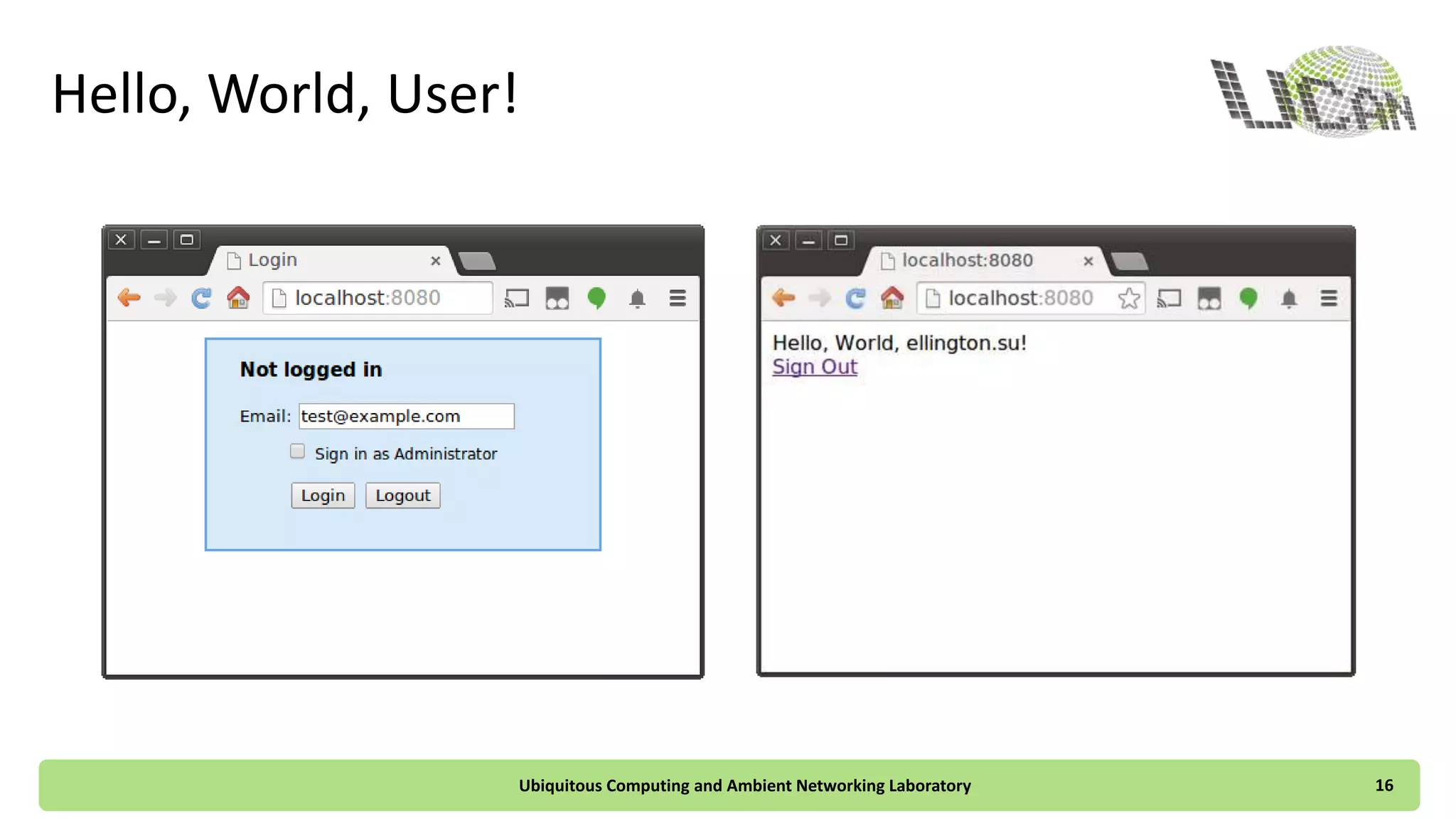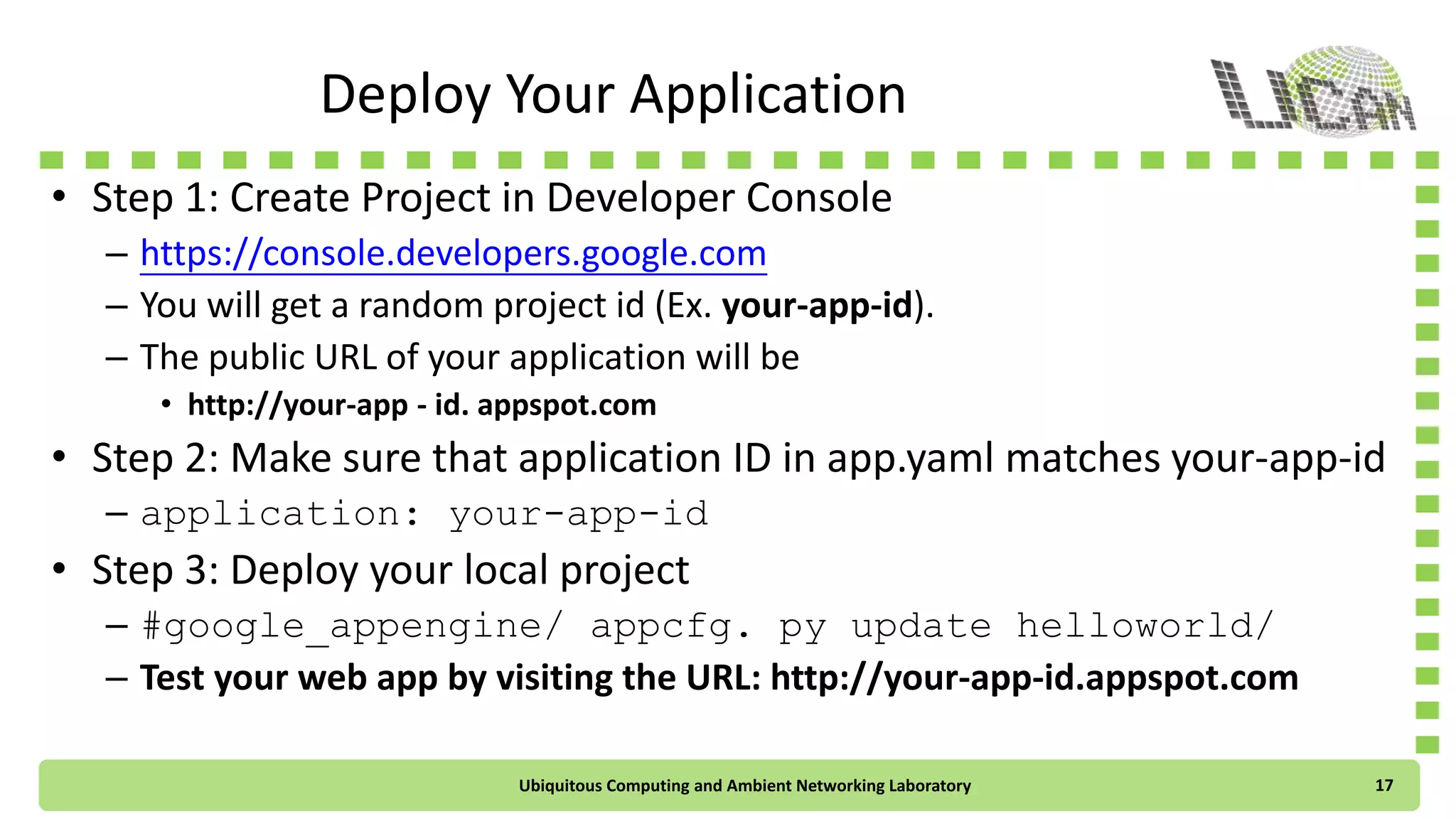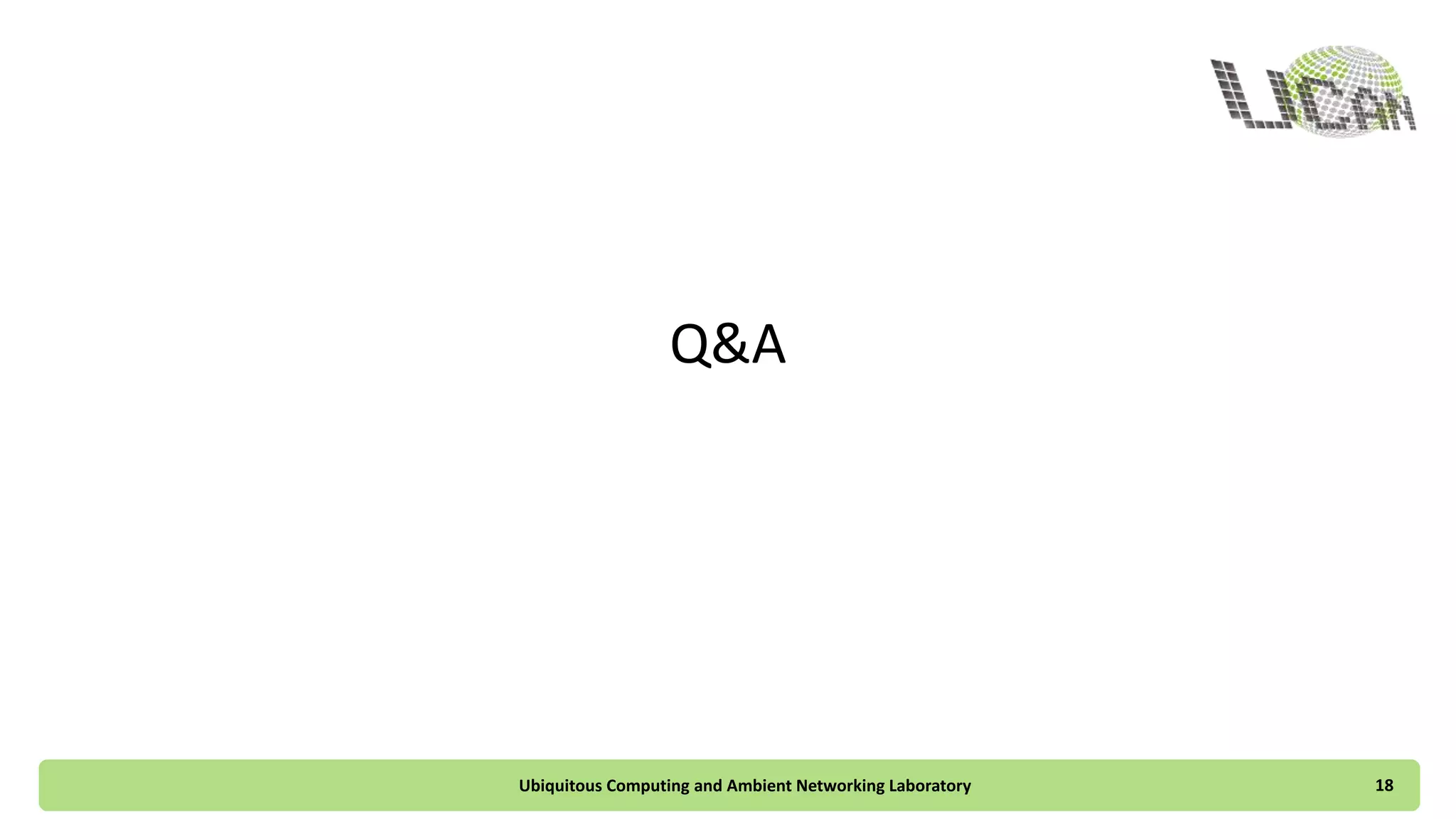The document provides a comprehensive overview of Google App Engine (GAE), detailing its functionalities, supported languages (such as Python, Java, PHP, and Go), and how to set up and deploy web applications. It includes instructions on setting up a development environment, configuring project structures, and using Google User Service for user management. Additionally, it offers code examples and deployment steps to facilitate the creation and launch of applications on the GAE platform.
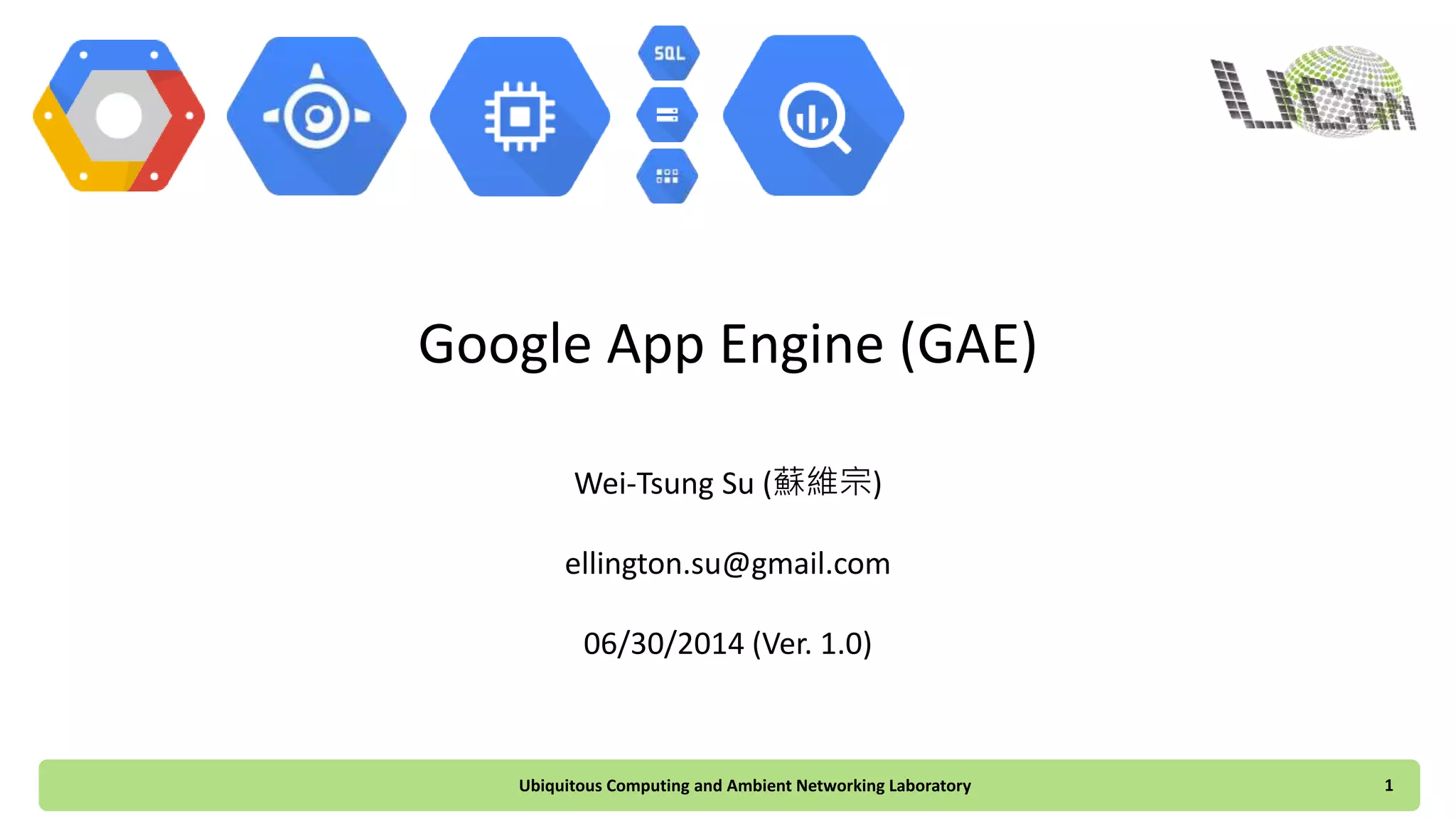
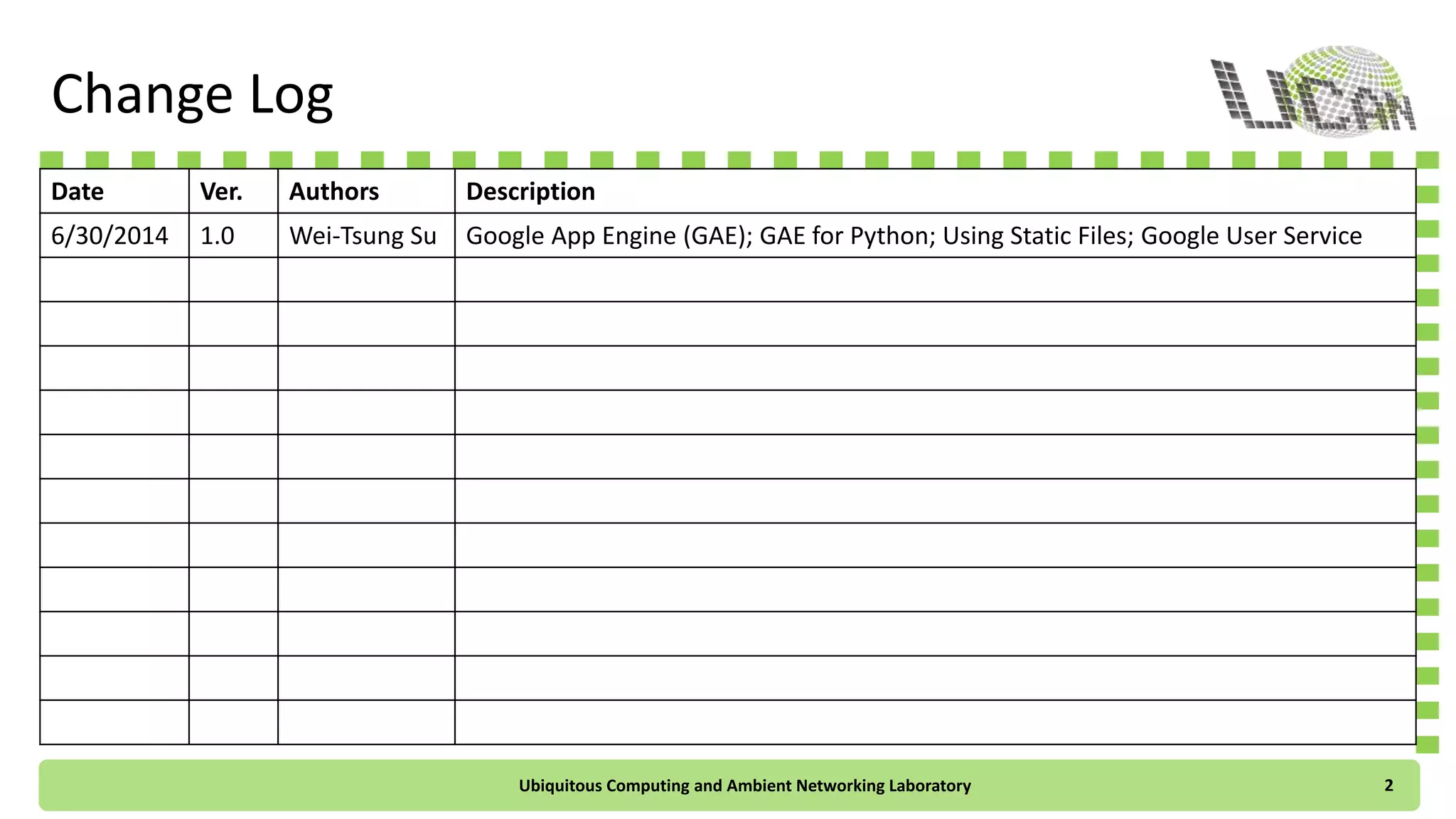
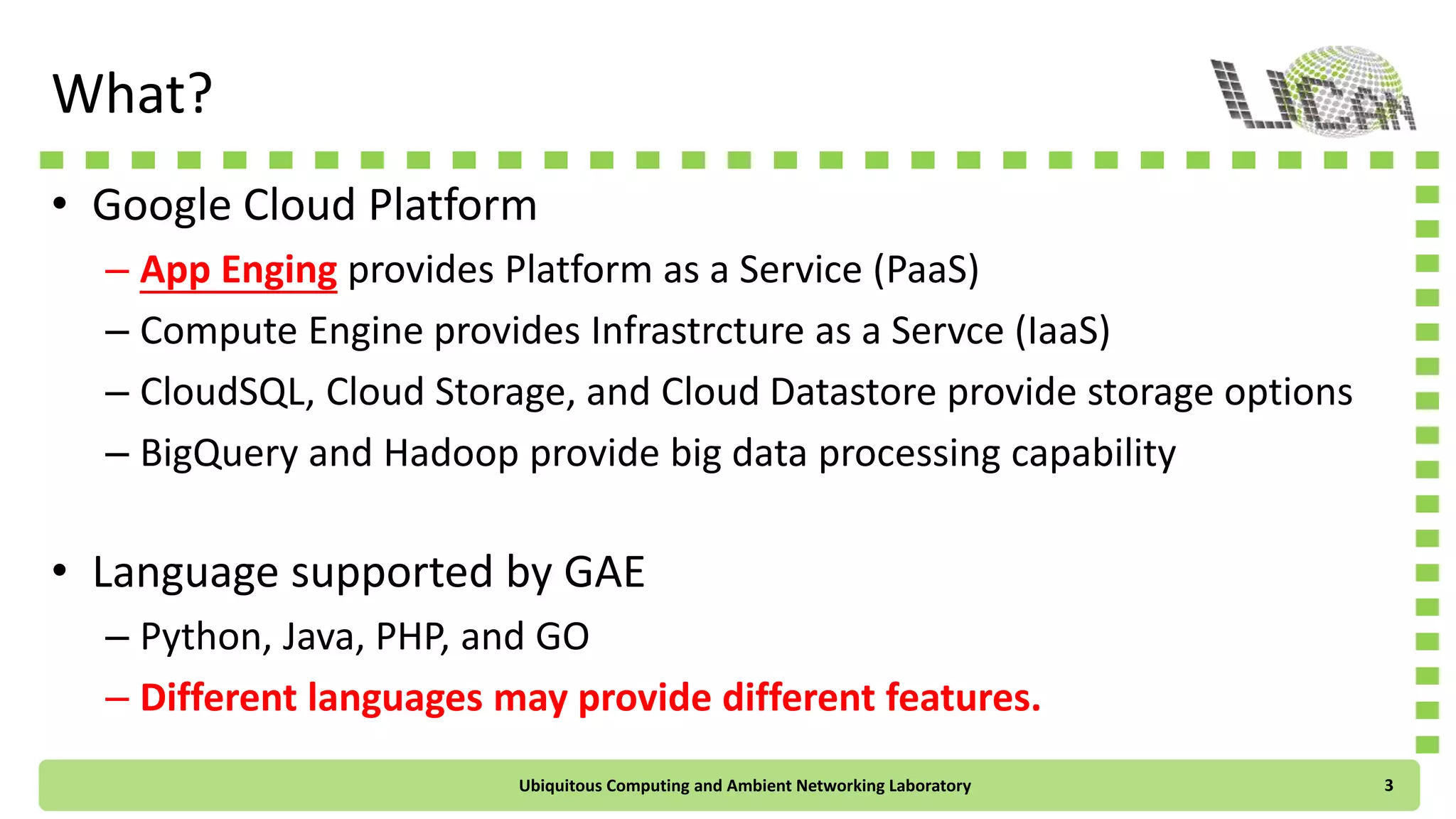
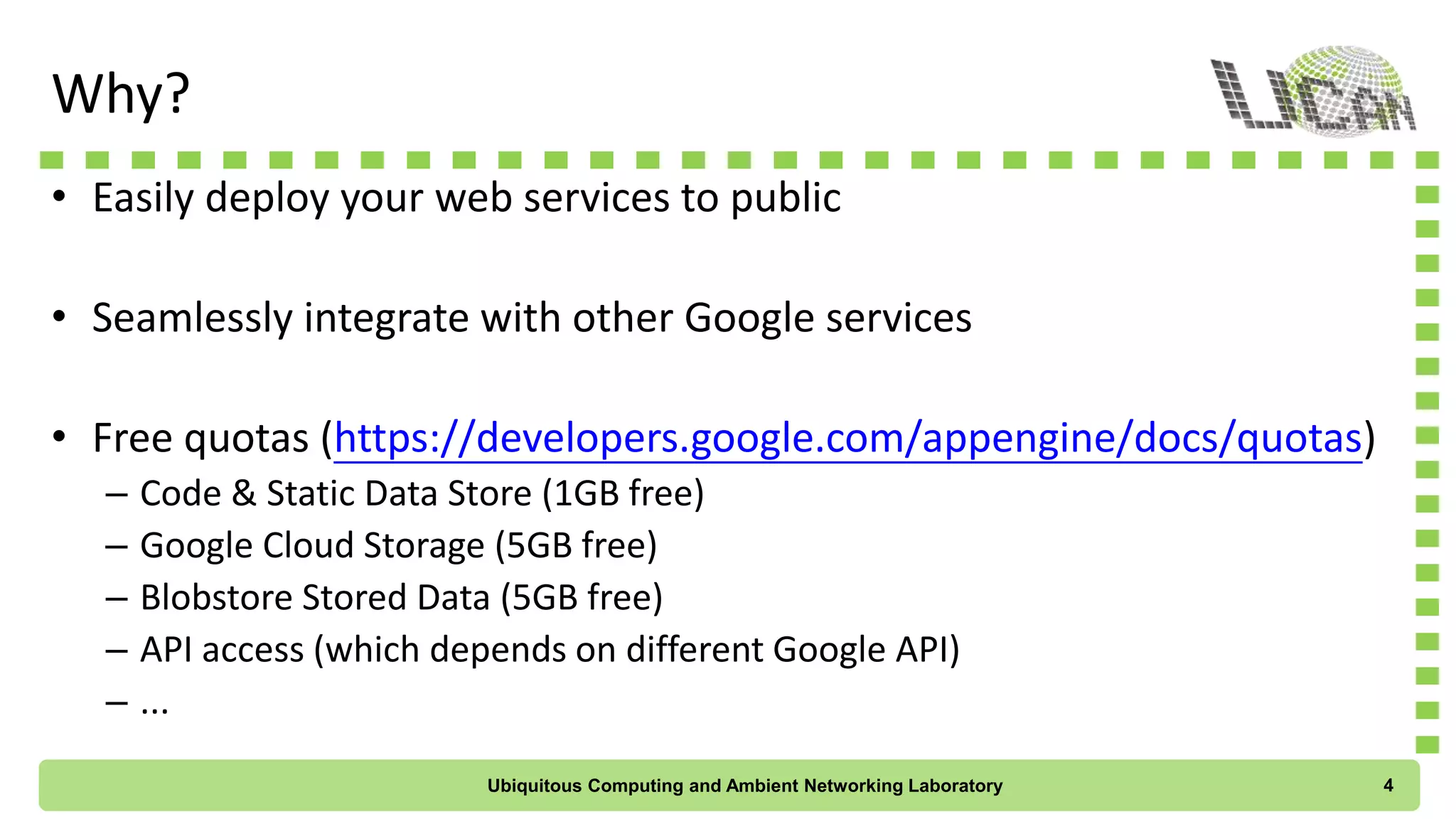
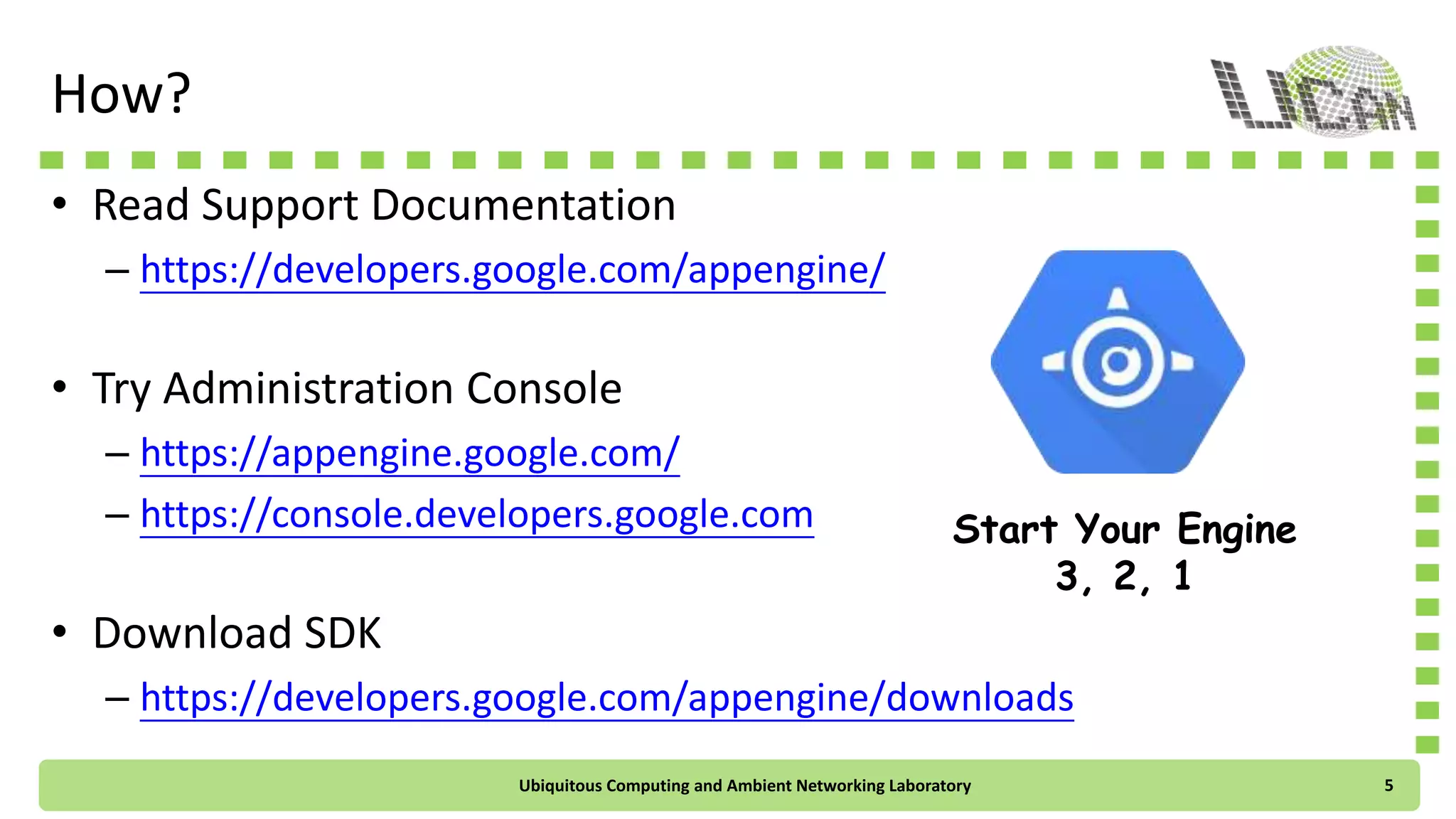
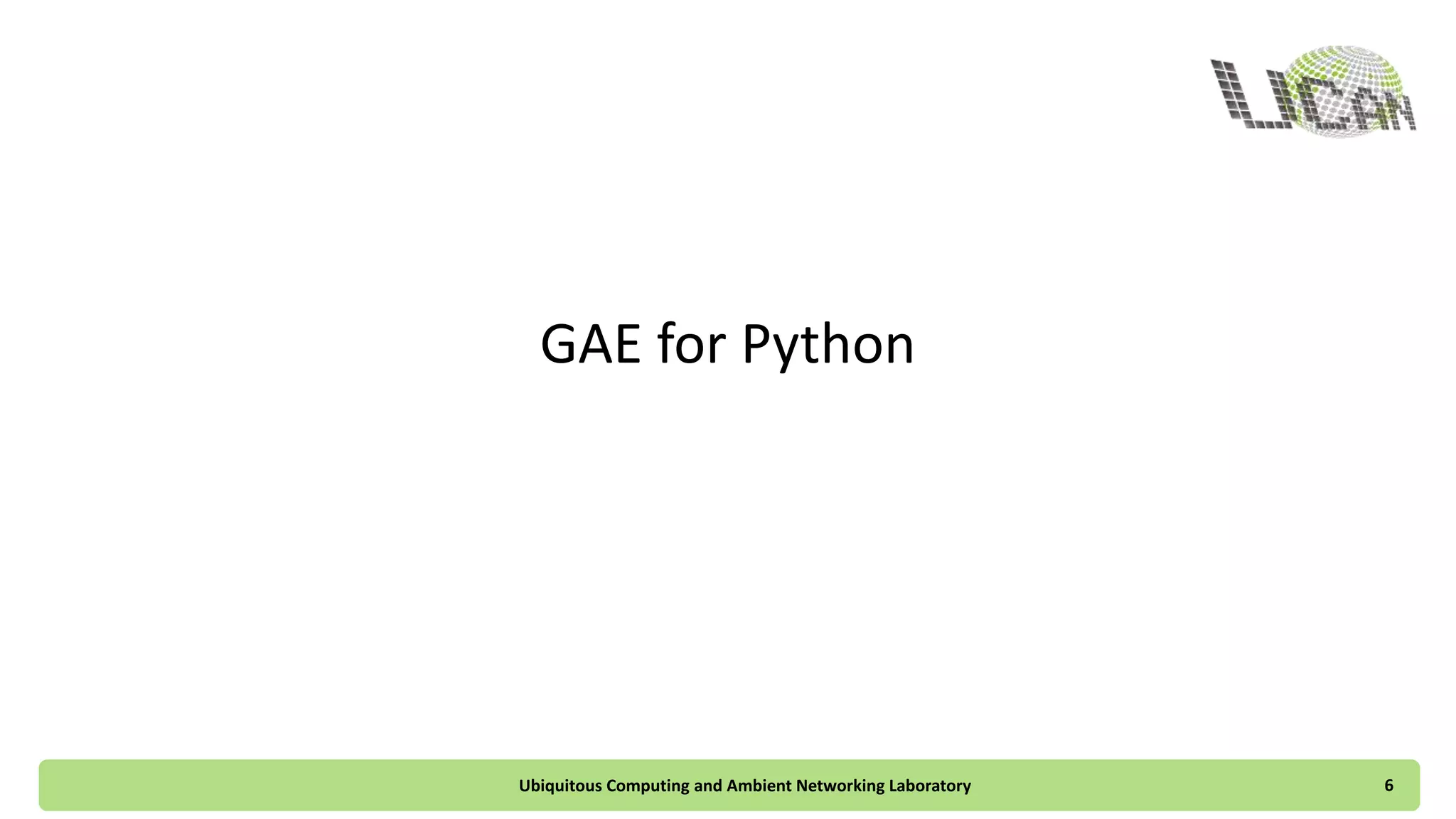
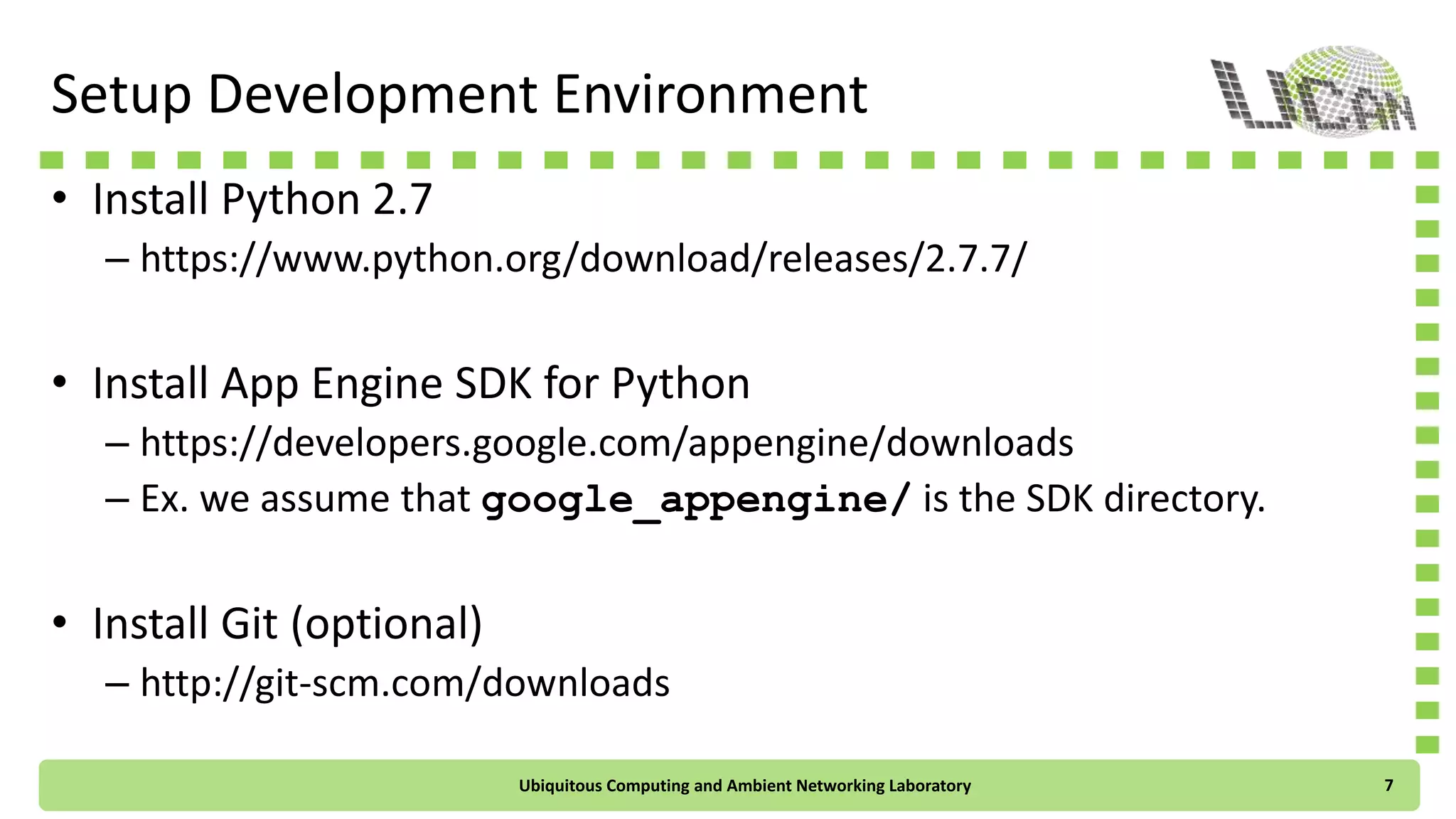
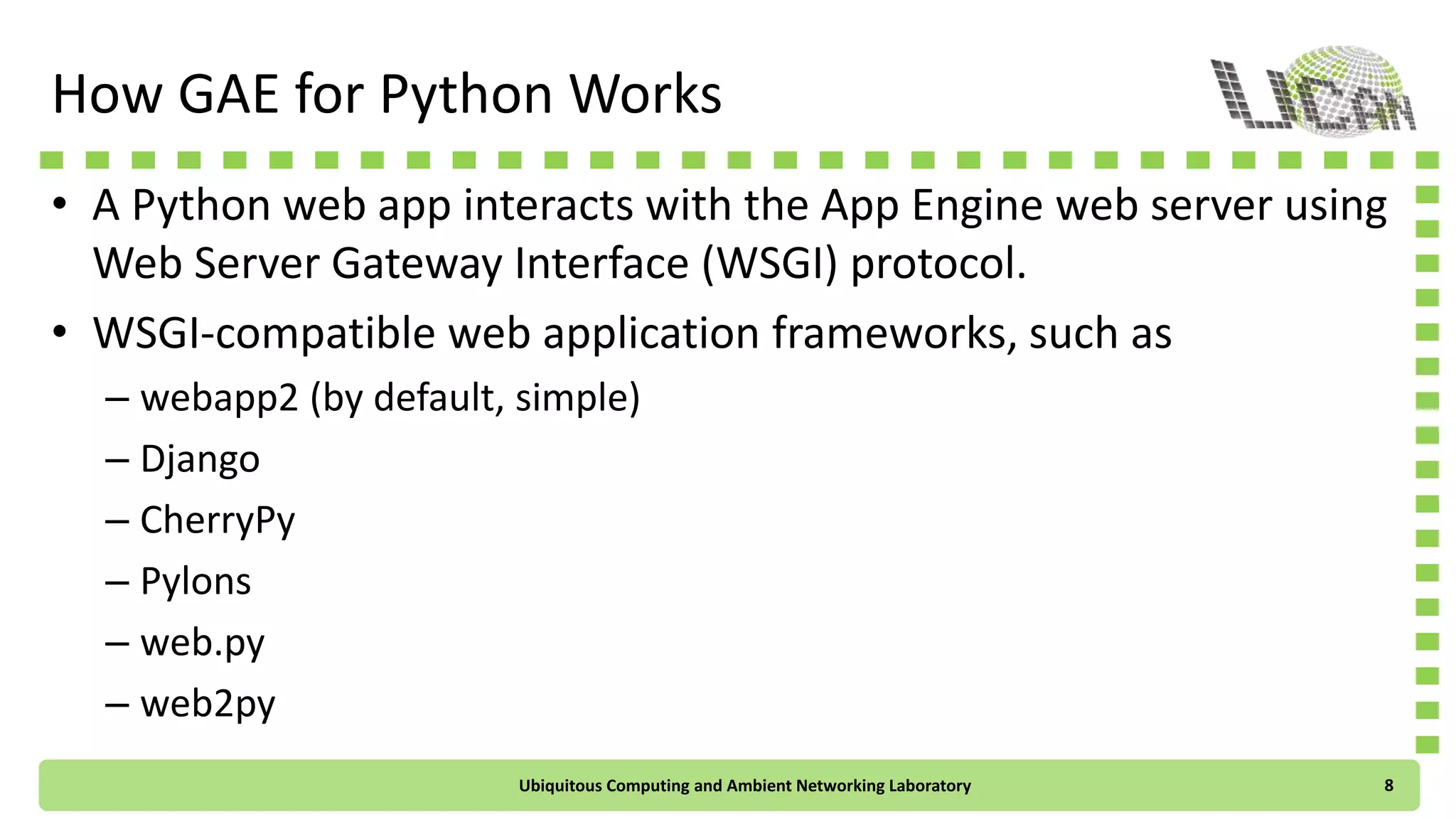
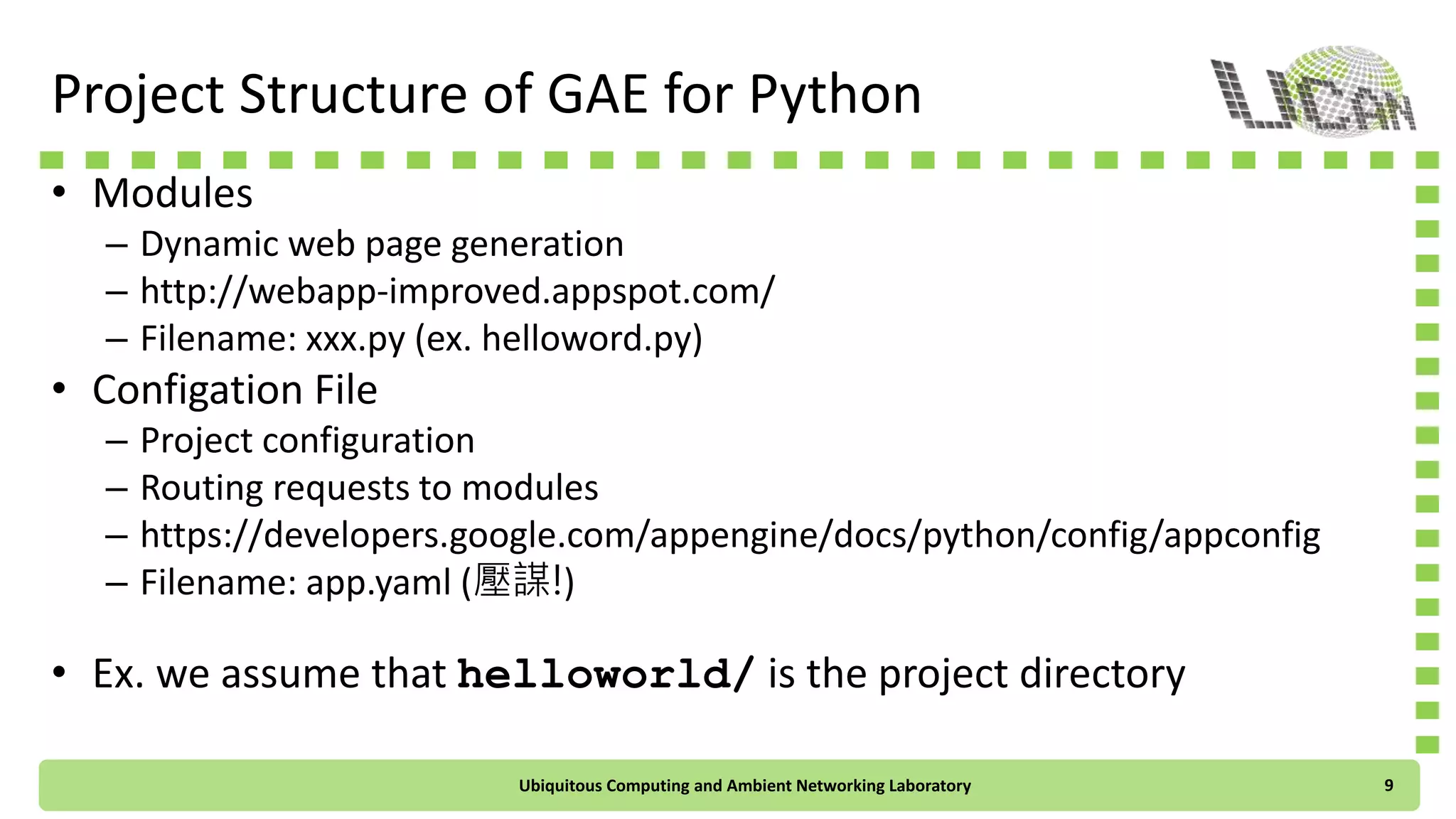
![Module: helloworld. py
• import webapp2
class MainPage(webapp2.RequestHandler):
def get(self):
self.response.headers['Content-Type'] = 'text/ html'
self.response.write('Hello, World!')
app = webapp2.WSGIApplication([
('/', MainPage),
], debug=True)
• For security issue, you should disable debug which will display a
stack trace in the browser when a handler raises an exception.
Ubiquitous Computing and Ambient Networking Laboratory 10](https://image.slidesharecdn.com/gaepythonbasic-140630015034-phpapp01/75/Google-App-Engine-for-Python-Unit01-Basic-10-2048.jpg)
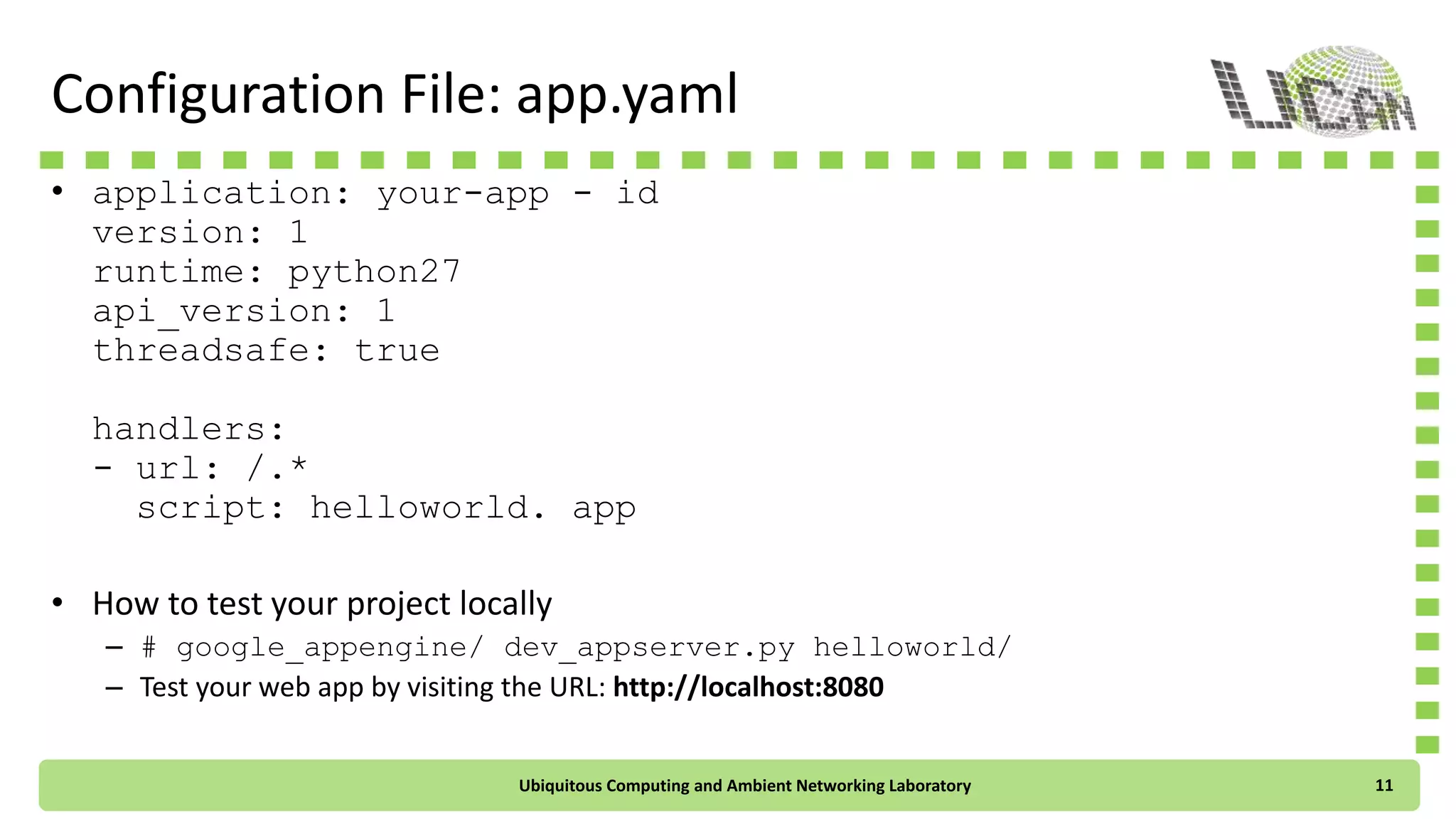
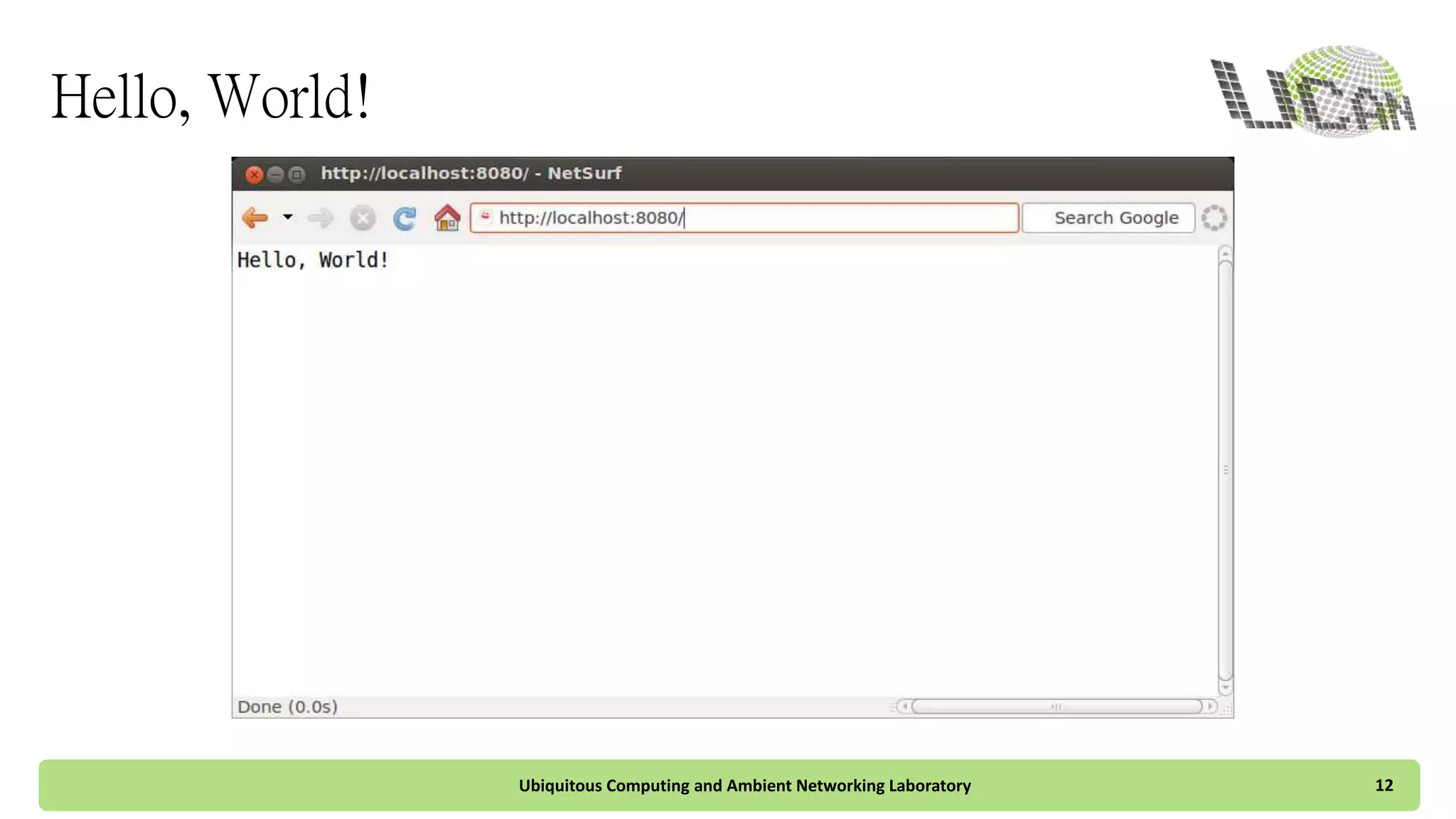
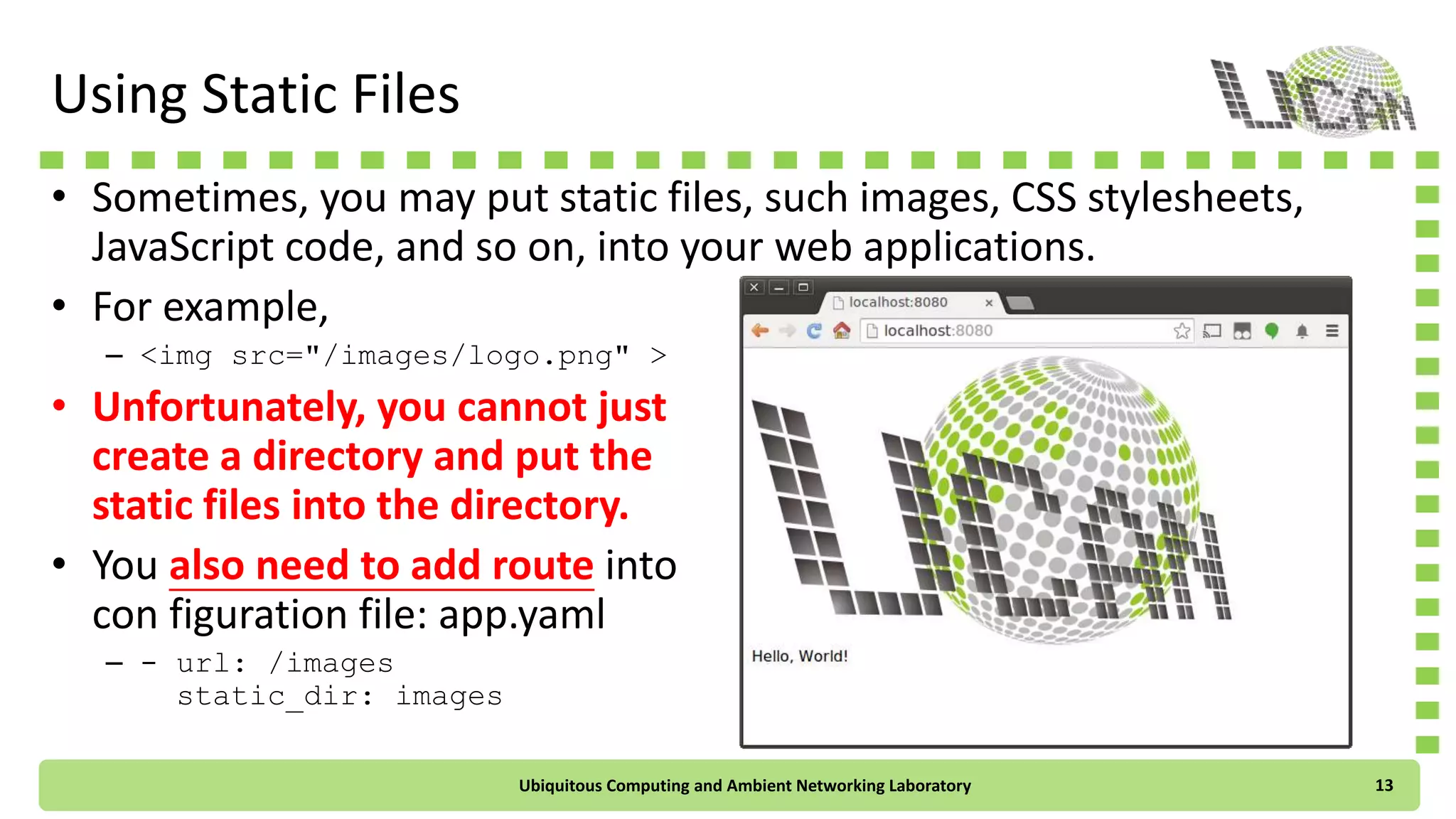
![Google User Service
• Google user service (https://developers.google.com/appengine/docs/python/users/)
• Import user service module
– from google.appengine.api import users
• Get current user
– user = users.get_current_user() # Google Account, Google Apps Account, OpenID
• Access user information
– user.nickname()
– user.email()
– user.user_id()
• Administrator check
– user.is_current_user_admin()
• Create login/logout pages
– users.create_login_url('[destination URL]')
– users.create_logout_url('[destination URL]')
Ubiquitous Computing and Ambient Networking Laboratory 14](https://image.slidesharecdn.com/gaepythonbasic-140630015034-phpapp01/75/Google-App-Engine-for-Python-Unit01-Basic-14-2048.jpg)
![Google User Service - Example
• from google.appengine.api import users
import webapp2
class MainPage(webapp2.RequestHandler):
def get(self):
user = users.get_current_user()
if user:
self.response.headers['Content-Type'] = 'text/ html'
self.response.write('Hello, World, %s!<br>', %(user.nickname()))
self.response.write('<a href="%s">Sign Out</a>'
% users.create_logout_url(self.request.url))
else:
self.redirect(users.create_login_url(self.request.url) )
app = webapp2.WSGIApplication([
('/', MainPage),
], debug=True)
Ubiquitous Computing and Ambient Networking Laboratory 15](https://image.slidesharecdn.com/gaepythonbasic-140630015034-phpapp01/75/Google-App-Engine-for-Python-Unit01-Basic-15-2048.jpg)
